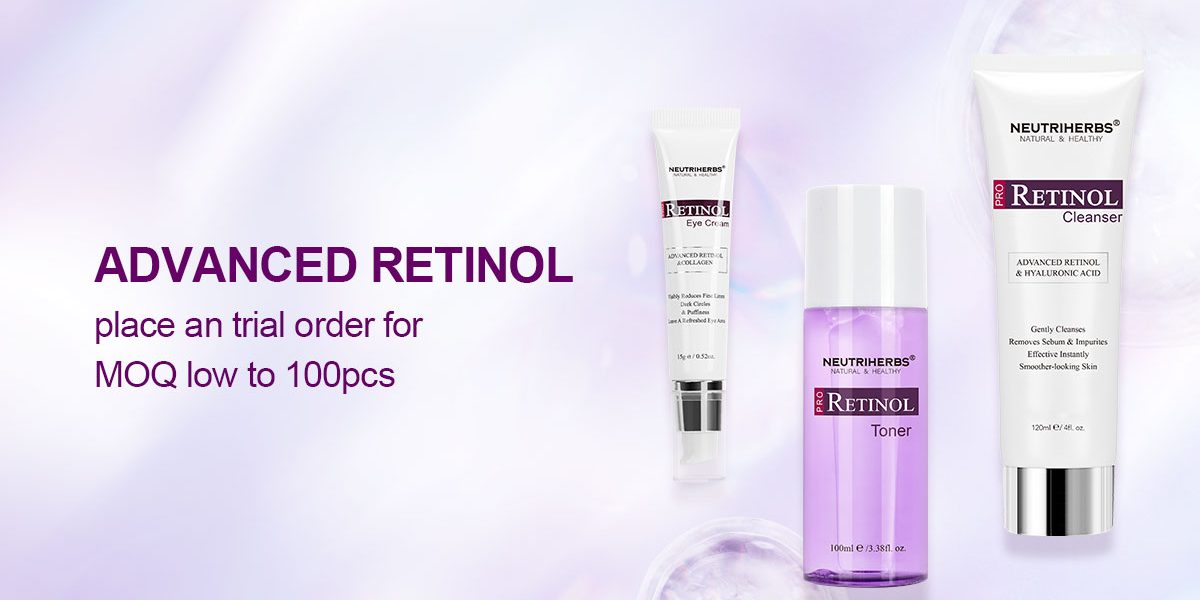Retinol improves skin quality, its texture, blemishes (which are in full swing around summer) and expression lines. In addition, it helps to firm the skin, because it activates collagen and elastin fibres.
“What cream should I buy?”, many of our customers ask us this question and the answer is, “it depends on your skin type and the needs of each moment”, we also recommend the trio of active ingredients that are essential for you. If it works perfectly on your skin, it is recommended to add this ingredient to your routine.
Retinol, in all its forms, always derived from vitamin A, is the greatest anti-ageing active ingredient known to date and recognized by the scientific community. It can stimulate the natural production of collagen and hyaluronic acid in our skin, providing multiple benefits: it reduces wrinkles, fades spots, renews and regenerates the skin, provides light and reduces the size of pores, among others. We can say that retinol can even out the tone and texture of the skin, that is, improve its overall appearance. It is, in short, the jewel in the cosmetic crown.
But, what formula should you use? When and how? Rest or continue? Will it irritate your skin?
Next, we will let you know some of the truths related to retinol and its use, to introduce you to this wonderful product.
1. Retinoic acid, retinol, retinoate… the thousand and one forms of retinoids
Retinoic acid, retinol, retinoate, etc. All retinoids cross the skin barrier by activating cell receptors to prevent ageing.
- Retinoic acid is the active form of vitamin A, although it can also irritate.
- Retinol. Retinol is transformed in our skin into retinoic acid and is the least irritating.
- Retinate. Retinoate works like retinoic acid, but it does not cause redness.
2. If you have sensitive skin you can also use retinol
This is great news for all those skin types that tend to get red and itchy and who previously only dared to look at retinol derivatives at the pharmacy. Today there are products with this wonder of activeness that are perfectly tolerated by these reactive skins; yes, they have to be prescribed properly.
The lowest concentration of retinoic acid that is marketed is 0.025%, but master formulas with lower concentrations can be made. In any case, sensitive skin ends up getting used to the most powerful retinol, and there comes a time when the sensitivity and flaking disappear.
3. Retinol is not a nighttime ingredient.
Until recently, it was believed that it was, but as it has been proven, the fault was that whoever applied it during the day, went outside in the full sun without photoprotection and therefore suffered burns. Today it is known that there is no problem if we use the right amount and then your sun protection.
The cosmetic industry has taken pity on skin that needs an extra push when it comes to renewing itself at all levels and has created products that incorporate retinol or retinoic acid together with high sun protection, never less than 50. be careful with light because it breaks down the formula of any retinoid. It is for this reason that they come in opaque packaging.
4. No need to take a break from retinol
Another old belief to discard: it cannot be used continuously. On the contrary! Using the vitamin A precursor for a few months and “taking a break” only means losing the continued effects. It’s like joining the gym for three months and leaving it for another three: living off the rents, when it comes to taking care of yourself, of course.
5. Retinol doesn’t just work against wrinkles
Of all anti-ageing active ingredients, it is my number one. It blurs wrinkles and blemishes, inhibiting the production of melanin, and regenerates the skin from within, improving its texture and reducing the appearance of pores.
Of course, we recommend that you consult with the dermatologist before opting for a formula or a concentration. Without a doubt, they will provide the best advice.

